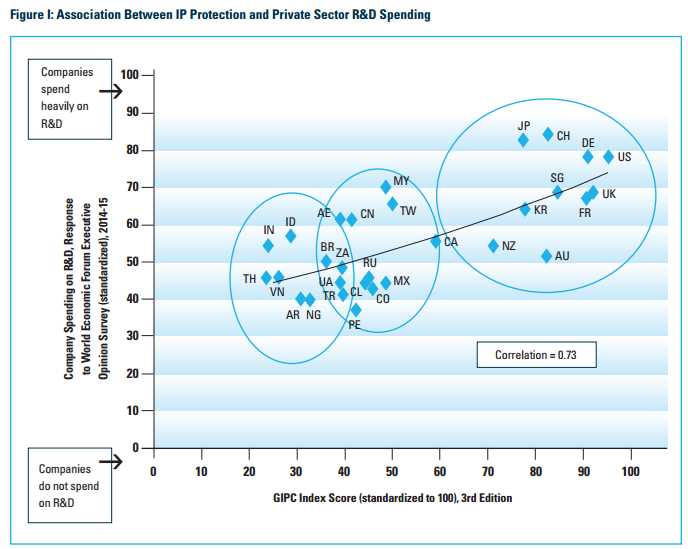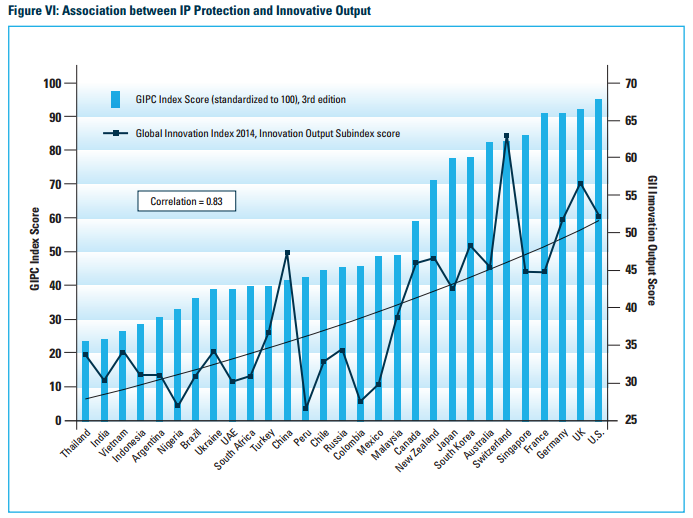U.S. Ranks First in Intellectual Property Rights
The International IP Index, published by the U.S. Chamber of Commerce’s Global Intellectual Property Center (GIPC) was released earlier this week. The full report can be found here.
Now in its third edition, the GIPC Index provides data analysis intended to be a tool for governments to understand the key IP factors that drive business innovation. In addition, the index reflects indicators that companies monitor closely as they plan their R&D. Key IP inputs measured include: Patent protection, enforcement and international treaties.
As the first ranked country in the index, the report attributes the U.S.’s score to the following areas of strength:
- Pharmaceutical-related patent enforcement and resolution mechanism
- Patentability and strict definition of computer-implemented inventions
- Digital rights management legislation
- Protection of trade secrets
- Deterrent civil remedies and criminal penalties
- Commitment to and implementation of international treaties
On the other hand, the report also mentions areas of weakness for the U.S.:
- Increasingly narrow interpretation of patentability of biotech inventions
- Inconsistent enforcement against counterfeit and pirated goods sold online
- Concerns over border officials’ ability to share information with rights holders
What does this imply? The report found a strong (0.73) correlation between IP Protection and private sector R&D spending.
Source: GIPC International IP Index Third Edition, February 2015
Likewise, an even stronger correlation (0.83) exists between IP Protection and innovative output.
Source: GIPC International IP Index Third Edition, February 2015
It should be noted that although the U.S. ranks number one in the GIPC Index, the Property Rights Alliance ranked the U.S. 17th in its 2014 International Property Rights Index which aims to quantify the strength of both physical and intellectual property rights.
IP protection is essential to developing innovative solutions and products in any sector, but perhaps even more so in health care. This blog has written about how pharmaceutical innovation in today’s regulatory environment could not be financed without patent protection. Protected intellectual property rights drive investments in innovative research and output; it is crucial for the U.S. to continue to respect them.




What are some key inputs in measuring physical property rights?
“Inconsistent enforcement against counterfeit and pirated goods sold online.”
I wonder if the emergence of cryptocurrency has anything to do with this.